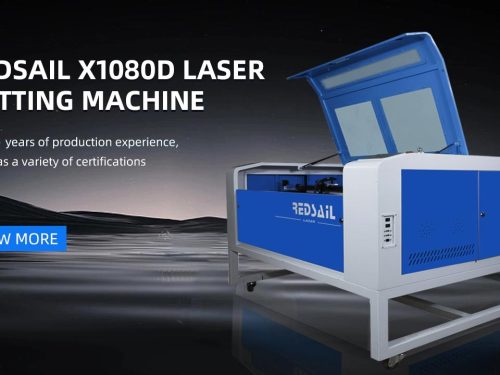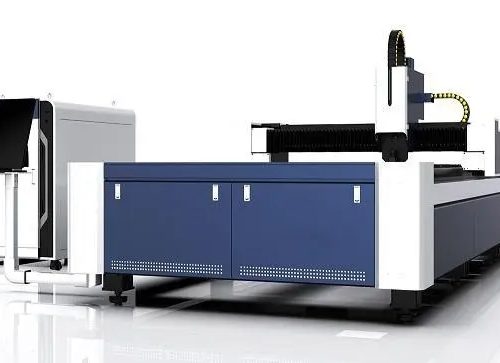
Due to the popularity of metal laser cutting machines, the competition between metal processing manufacturers has become increasingly fierce, leading to a decline in the profit margin of metal laser cutting machines.
Therefore, in the context of the transformation and upgrading of the entire manufacturing industry, how to reduce the cost of metal laser cutting has become an urgent task. Metal manufacturers should focus their investment on more value-added production processes, such as process improvement, efficiency improvement and research and development.
This paper will discuss the choice of auxiliary gas for metal laser cutting to reduce the cost of metal processing. Let’s delve into the details.
Why is auxiliary gas used in metal laser cutting?
The use of auxiliary gases in metal cutting has the following advantages:
1. Blow away the slag in the coaxial notch;
2. Cool the surface of processed metal and reduce the heat affected zone;
3. Cool the focusing lens to prevent dust from entering the lens bracket and polluting the lens, and prevent the lens from overheating;
4. Some cutting gases can also protect base metals.
Influence of auxiliary gas on metal laser cutting
First, let’s take a look at the metal laser cutting process.
The laser produced by the vibrator passes through the lens and gathers at a point, forming a very small spot. By precisely controlling the distance between the lens and the metal plate, the light spot is stable in the direction of material thickness. At this time, due to the convergence of the lens, the light spot will gather laser energy with high power density, which can generally reach 106-109W/cm2. Metals absorb point energy and melt immediately. The use of auxiliary gas can blow the molten liquid metal away from the processed plate, thus completing the cutting process.
During the whole cutting process, the auxiliary gas mainly acts as the driving force to remove the metal fluid from the plate. Different gases have different effects on the processed metal plate and cutting section.
O2, N2 or air?
Auxiliary gases include oxygen, nitrogen and air (argon in rare cases). The selection of these gases depends on the type, thickness and required edge quality of the material to be cut.
The low pressure and high speed of oxygen make it an ideal choice for cutting low carbon steel, while the inert characteristics of nitrogen can provide clean, accurate and oxidation free cutting on all materials. However, in addition to these basics, metal manufacturers must weigh many key factors in order to select the right auxiliary gas for the job. Before cutting, indirect labor cost, required edge quality, gas cost and laser power need to be considered.
Effect of O2 as an auxiliary gas on metal laser cutting
When oxygen is used as the auxiliary gas, it will not only blow away the molten metal liquid, but also cause oxidation reaction, thus promoting the endothermic melting of metal, so as to realize the melting of thicker metal. This process greatly improves the processing ability of the laser.
However, due to the presence of oxygen, the cutting surface of the material is obviously oxidized. In addition, it quenches the materials around the cutting surface, which improves the hardness of the metal and has a certain impact on the subsequent processing.
Influence of nitrogen as auxiliary gas on metal laser cutting
When nitrogen is used as the auxiliary gas, it will form a protective atmosphere around the molten metal to prevent the material from being oxidized, thus ensuring the quality of the cutting surface.
However, N 2 has no oxidation to enhance heat transfer, so it cannot help improve the cutting ability like O 2.
In addition, nitrogen consumption is relatively large, which leads to an increase in cutting costs compared with the use of other gases.
Influence of air as auxiliary gas on metal laser cutting
Air consists of 78% nitrogen and 21% oxygen.
When air is used as auxiliary gas, oxidation of cutting part is inevitable due to the presence of oxygen.
However, due to the presence of large amounts of nitrogen, the oxidation reaction caused by oxygen is not sufficient to enhance heat transfer, and the cutting ability is not improved. Therefore, the effect of air cutting is between nitrogen cutting and oxygen cutting.
The advantage is that the cost of air cutting is very low. All costs are the power consumption of the air compressor supplying the air and the consumption of the filter element in the air pipeline.
Influence of auxiliary gas on the cost of metal laser cutting
When nitrogen is used as the auxiliary gas, the cross section shows silver luster.
When air is used as auxiliary gas, the cross section is light yellow.
Let’s take the 1.5mm thick 304 stainless steel as an example to analyze the cutting cost when air and nitrogen are used as auxiliary gas, as shown in Table 1.
The model used in the comparison is the latest generation fiber laser cutting machine equipped with a self-developed fiber laser oscillator.
Table 1 Cost reduction comparison
Project SUS304-1.5 SUS304-1.5
Processing speed (mm/min) 35000 35000
Auxiliary gas type Air N2
Air pressure (MPa) 0.80 0.80
Auxiliary air flow (NL/min) 296.7 296.7
Processing time per meter (sect) 1.7 1.7
Electricity charge (yuan/hour) 14.675 14.675
Air compressor electricity charge (yuan/hour) 12.25 5.25
Auxiliary gas charge (yuan/hour) 0 15.347
Subtotal (yuan/hour) 26.9.25 35.272
Electric charge (yuan/m) 0.012 0.012
Air compressor electricity charge (yuan/m) 0.006 0.002
Auxiliary gas cost (yuan/m) 0 0.015
Total (RMB/m) 0.018 0.029
be careful:
1. In the above cost analysis, the operating rate of the machine tool is calculated as 70%, and the charge is calculated as 1 yuan/kW. The cost of N2 is calculated according to the cost of liquid N2: 1.5 yuan.
2. During air cutting, the power consumption of the air compressor is calculated according to the constant screw air compressor of 17.5kW, 1.26MPa and 2.3m3/min.
3. When N2 is used for cutting, the air compressor is still required to supply air to the machine, so the electricity cost will also be incurred.
According to the above cost analysis, when air is used as the auxiliary gas for cutting, compared with nitrogen, the hourly cutting cost can be reduced by 23.7%.
The calculation is as follows:
Cost reduction=(N2 air)/N2=≈ 23.7%
This cost reduction can make a great contribution to reducing the overall processing cost of the plant. In addition, the power consumption of the air compressor is analyzed based on the constant speed screw compressor.
If the permanent magnet variable frequency screw air compressor is used, the power consumption of the compressor can be saved by 50%. Compared with nitrogen, the cost of cutting with air can be reduced by 36.2%.
Application range of air as auxiliary gas
1. Carbon steel plate/Q235
When air cutting, if the metal thickness exceeds 1.5mm, burrs may be generated in the cut part, but during the paper feeding test, the burrs generated are not sharp enough to scratch the paper. In addition, for different laser power and different types of vibrators, the maximum thickness of air cutting will be different.
1. Stainless steel plate/SUS304
When the stainless steel plate is cut with air, the cut part will produce a yellow oxide layer.
1. Aluminum plate/A1050 and aluminum alloy plate/5052
Compared with nitrogen cutting, cutting burrs will be reduced.
Table 2 Maximum thickness of air/oxygen cutting rear plate
Material type: 4kW CO2 laser cutting machine 4kW optical fiber laser cutting machine
Carbon steel plate/Q235 air 3mm
Oxygen 2 20 mm 22 mm
Stainless steel plate/SUS304 air 3mm
Oxygen 2 12 mm 18 mm
Aluminum plate/A1050 air 6mm 2mm
Oxygen 2 6 mm 8 mm
Aluminum alloy/5052 air 6mm 2mm
Oxygen 2 10 mm 16 mm
Influence of air on cutting quality of carbon steel, stainless steel, aluminum and aluminum alloy
1. Carbon steel plate
When air is used as auxiliary gas, small burrs may appear in the cutting part of the workpiece, but these burrs are not sharp, so they can be applied to the cutting of parts with large tolerance for burrs.
1. Stainless steel plate
As air is an auxiliary gas, the metal will be oxidized after processing, and the oxides will cause defects such as slag and air holes in the weld bead during welding, which will affect the welding quality and lead to reduced strength. Welding part. Therefore, if air is used as an auxiliary gas to complete the cutting of parts, the oxide layer of the welding part must be polished to improve the welding quality. In addition, if it is external, there may be some influence, because the cut part will be oxidized, thus forming a yellow oxide layer.
The oxide layer also affects welding, and the oxide layer must be ground before welding.
The oxide layer also affects welding, and the oxide layer must be ground before welding.
1. Aluminum plate/A1050 and aluminum alloy plate
It can reduce the burr of cutting aluminum or aluminum alloy with air as auxiliary gas. If nitrogen is used, the cutting burr will be larger.
Requirements for air supply unit when using air as auxiliary gas
When cutting with air, the air pressure shall be 0.9 MPa.
Considering the pressure level of air compressor produced by the manufacturer, screw air compressor with rated working pressure of 1.26 MPa and flow of 2.3 m3/min shall be selected.
Special attention shall also be paid to the quality of compressed air to ensure that the air dryness reaches 99% and the moisture content is less than 1/100.
Therefore, the filter element in the compressed air pipeline should be a reliable brand product, and special attention should be paid to replacing the filter element in time;
When choosing clothes dryer, there are two types of regenerative adsorption clothes dryer and refrigeration clothes dryer on the market. The two dryers have their own characteristics, but if long-term use, less maintenance and gas supply stability are considered, it is recommended to select regenerative adsorption dryers.
Finally, when selecting the diameter of compressed air pipeline and pressure reducer, the flow and pressure of compressor output gas must be met to ensure the stability of pressure when using compressed air.
In addition, permanent magnet variable-frequency screw air compressor has been sold on the market. Compared with the current constant speed screw air compressor, it can save 50% of the electricity cost and further reduce the cutting cost.
conclusion
In the increasingly fierce industrial competition environment, it may be one of the means to improve your advantages to increase the added value of products by improving the process difficulty of products or improving the level of industrial design. This is also an effective way to gain competitive advantage by saving processing costs under the existing process conditions.
The use of air for metal laser cutting can reduce costs, bring more profits to enterprises, and thus promote the transformation and upgrading of enterprises.
However, laser cutting with air is not always the best choice. Before cutting, metal manufacturers must weigh many key factors in order to select the appropriate auxiliary gas for the work. Indirect labor costs, required edge quality, gas costs and laser power need to be taken into account.
Choosing wisely means considering the entire application from setup to finished products. Consider how to use the part, and then select an auxiliary gas based on this.










